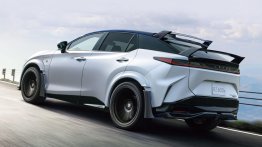A new measurement method developed by the Insurance Institute for Highway Safety (IIHS) has revealed a sharp increase in forward blind zones in modern vehicles—especially SUVs and pickups—over the past 25 years. This comes at a time when pedestrian and bicyclist fatalities have surged across the U.S.
In collaboration with the U.S. DOT’s Volpe Center, IIHS used its latest 360-degree camera and software rig to evaluate six best-selling vehicles from 1997 to 2023: the Chevrolet Suburban, Ford F-150, Honda Accord, Honda CR-V, Jeep Grand Cherokee, and Toyota Camry. The results were concerning.
The biggest drop was seen in the Honda CR-V, whose forward visibility within 10 meters plunged from 68% in 1997 to just 28% in 2022. Similarly, the Chevrolet Suburban dropped from 56% visibility in 2000 to 28% in 2023. The Ford F-150 was always low—starting at 43% in 1997 and falling to 36% by 2015.
Cars fared better. The Accord showed only a minor decline from 65% (2003) to 60% (2023), while the Camry dropped slightly from 61% (2007) to 57% (2023), changes within the study’s margin of error.
The IIHS’s new method eliminates the need for cumbersome physical grids or engineering drawings. It offers a quicker, scalable way to study driver visibility—crucial for understanding rising crash risks. With plans to map blind zones for 150 more models, the IIHS aims to link design changes to real-world crash data and insurance losses, helping shape safer vehicle designs in the future.













